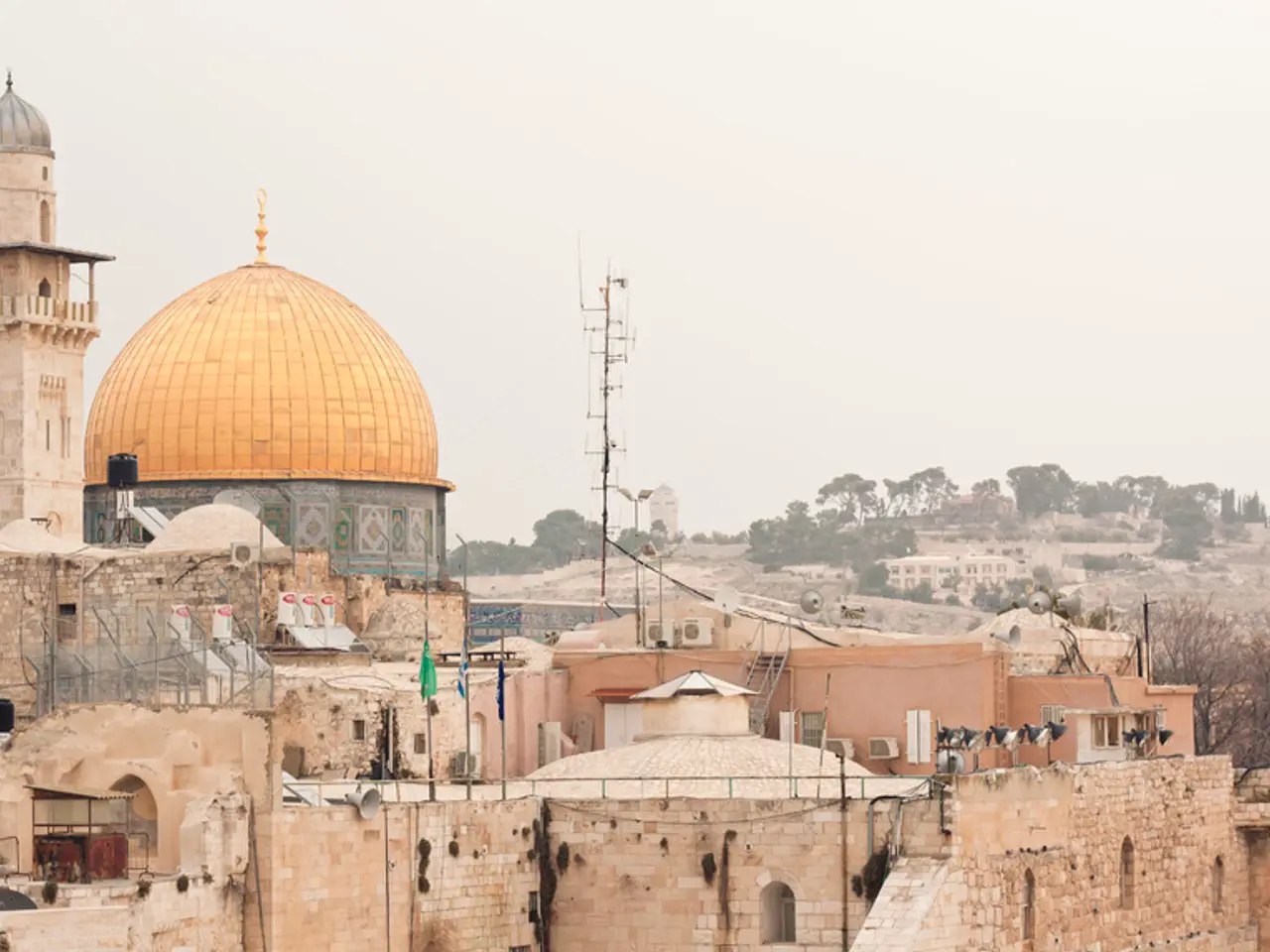Creating flame-resistant exterior interfaces utilizing Leviat's Ancon masonry reinforcement components
High-risk buildings require careful consideration when integrating Leviat's Ancon masonry support systems with cavity fire barriers, particularly at complex junctions. This article outlines the main challenges and typical solutions for a successful integration.
Design Challenges
The integration of masonry support systems and cavity fire barriers presents several design challenges that necessitate careful consideration:
- Maintaining Fire Compartmentation Continuity: Masonry support systems can disrupt the continuity of cavity fire barriers, making it crucial to address this issue, especially at complex junctions.
- Thermal Expansion and Movement: Building components expand and contract with temperature changes and loading. Support systems must accommodate these movements without compromising the fire barrier or structural stability.
- Load Transfer vs. Fire Resistance: Support systems carry significant loads, and ensuring their structural performance while using materials or detailing that do not degrade fire resistance is complex.
- Material Compatibility and Corrosion Protection: Supports, often made from stainless steel or galvanised steel, must be compatible with fire barrier materials to prevent corrosion at junctions.
- Installation Practicalities: The system must be straightforward to install on-site without damaging fire barriers or requiring excessively complex detailing.
Solutions and Best Practices
Addressing these challenges requires a combination of careful design, the use of compatible fire-resistant materials, tested product assemblies, and proper detailing:
- Integrating Fire Stopping Materials with Ancon Supports: Use intumescent fire sealants or fire-resistant mineral wool packings around support fixings that penetrate cavity fire barriers to restore compartmentation.
- Selecting Appropriate Fire-Resistant Products: Use cavity fire barriers certified to accommodate penetrations by steelwork, such as the Ancon masonry support system.
- Designing for Movement: Allow tolerances within the support system for expansion and accommodate movement joints with flexible fire barrier materials.
- Coordinating Structural and Fire Engineering Designs: Early collaboration between structural engineers, fire engineers, and manufacturers of both supports and fire barriers avoids conflicts.
- Use of Proprietary System Components: Leviat offers tailored components and accessories compatible with fire barriers, such as fire-rated cavity trays or barrier supports designed to fit with Ancon products.
- Testing and Certification Compliance: Specify tested assemblies where the combination of support and fire barrier has been subjected to fire tests.
- Practical Installation Guidance: Train site teams on careful installation to avoid damaging fire barriers and sequence works so that fire barriers are installed before or directly after support fixing, with fire-stopping immediately applied.
The key to successfully integrating Leviat Ancon masonry supports with cavity fire barriers lies in careful design coordination, use of compatible fire-resistant materials, tested product assemblies, and proper detailing. Early interdisciplinary collaboration and adherence to manufacturer guidance and fire test evidence ensure that both structural and fire safety objectives are achieved in high-risk buildings.
The solution for the Bermondsey Heights development met today's regulatory demands without restricting architectural freedom. The Building Safety Act and Gateway 2 approval process are driving higher standards in the construction industry. Careful consideration is given to the location and geometry of masonry support brackets in relation to fire barrier placement.
Leviat works closely with leading fire barrier manufacturers to ensure its Ancon masonry support systems can be integrated seamlessly across a wide range of applications. Leviat tailors its detailing to suit both the specific project and the chosen fire protection system, supporting multiple manufacturers.
Collaboration between Leviat and cavity barrier manufacturer, Siderise, on the 26-storey Bermondsey Heights residential development in Southwark resulted in a support detail that avoided unnecessary bracket penetration into the fire zone. Leviat's approach to designing support systems is focused on working with standard fire barrier products, not against them. The solution for Bermondsey Heights reflects the principles now embedded in Gateway 2 requirements.
Architects and specifiers are under pressure to deliver safe, fully coordinated building designs. Leviat works early in the design stage with specifiers and contractors to agree on workable solutions for complex junctions. The objective is to support safety and compliance while maintaining flexibility in specification. The collaboration resulted in a support detail that avoided unnecessary bracket penetration into the fire zone, demonstrating Leviat's commitment to both safety and architectural freedom.
- To ensure fire compartmentation continuity and maintain structural integrity, it's essential to integrate Leviat's Ancon masonry support systems with cavity fire barriers using fire-resistant materials like intumescent fire sealants or fire-resistant mineral wool packings for support fixings at complex junctions.
- Successfully integrating Leviat's Ancon masonry support systems with cavity fire barriers also requires proper design, such as coordinating structural and fire engineering designs, and using flexible fire barrier materials to accommodate movement in the support system.




